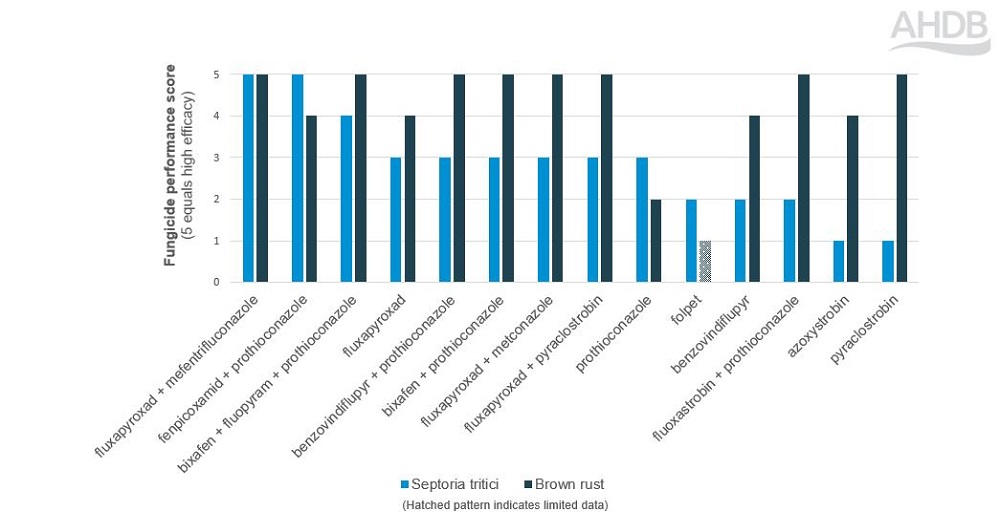Fungicide resistance management in winter wheat
Thursday, 12 May 2022
With the T2 spray timing in winter wheat rapidly approaching, Jason Pole, who manages technical communications at AHDB, highlights points for managing fungicide resistance.
In theory, any pathogen can develop resistance to fungicides, but septoria tritici has a proven track record of working its way around chemistry. It is one of the reasons why AHDB invests in strategic monitoring of the pathogen that causes the disease.
Based at NIAB, Bart Fraaije works closely with our fungicide performance team to gather septoria pathogen isolates from various UK locations – before and after fungicides are applied.
In the laboratory, these samples are used to screen their sensitivities against key fungicides – azoles and SDHIs, as well as new modes of actions (MoAs) that are in line to enter the UK market.
By comparing the results with a baseline sensitivity for each fungicide, it is possible to track the development of resistance.
Project results, which are presented at the AHDB Agronomists’ Conference in December, always provide a reminder of the need for fungicide stewardship.
Read the fungicide resistance article from the 2021 Agronomists’ Conference
Earlier this week, we published the 2022 project report, which includes results from baseline studies of fenpicoxamid.
As a quinone inside inhibitor (QiI), fenpicoxamid is a relatively new mode of action for cereal disease management.
It offers good potential to maximise efficacy and manage resistance in a carefully constructed spray programme.
In laboratory screens, baseline studies show a strong inhibition of septoria growth at very low concentrations of fenpicoxamid.
This is good news. However, it is important to note that the Fungicide Resistance Action Group (FRAG) classifies the resistance risk for this mode of action as ‘moderate/high’ in septoria.
As always, it is important to use the lowest active ingredient dose possible to obtain the required control – with each component of the mix giving comparable levels of control.
Based on fungicide performance data, Figure 1 shows the relative efficacy of active ingredients for the control of septoria tritici and brown rust. This information can be used to help balance a fungicide spray.
And remember, the inclusion of a multisite (e.g. folpet) at T2 will help to protect Qil chemistry, as well as any azole and SDHI in the mix.
 AHDB
AHDB
Figure 1. The relative efficacy of active ingredients for the control of septoria tritici and brown rust in wheat


 guidelines pictured at the Cereals 2017 event.jpg?v=637879572050000000)
